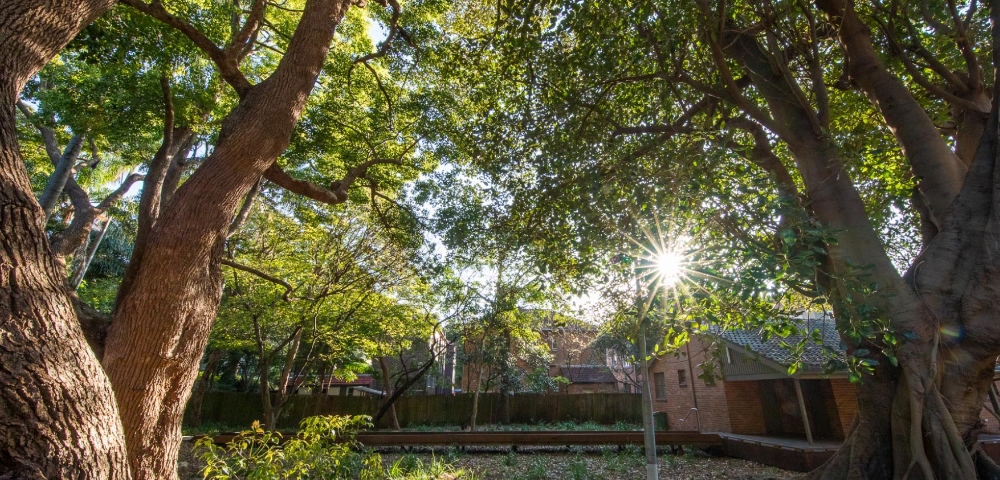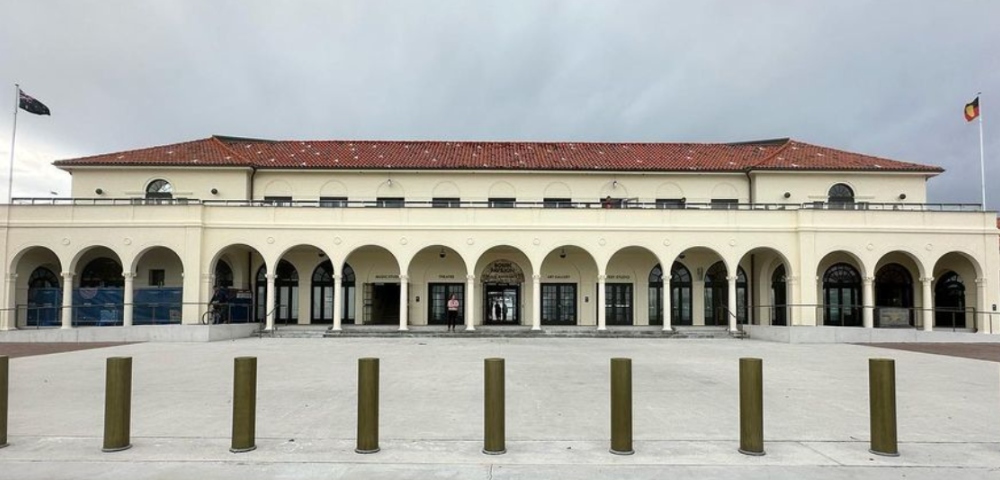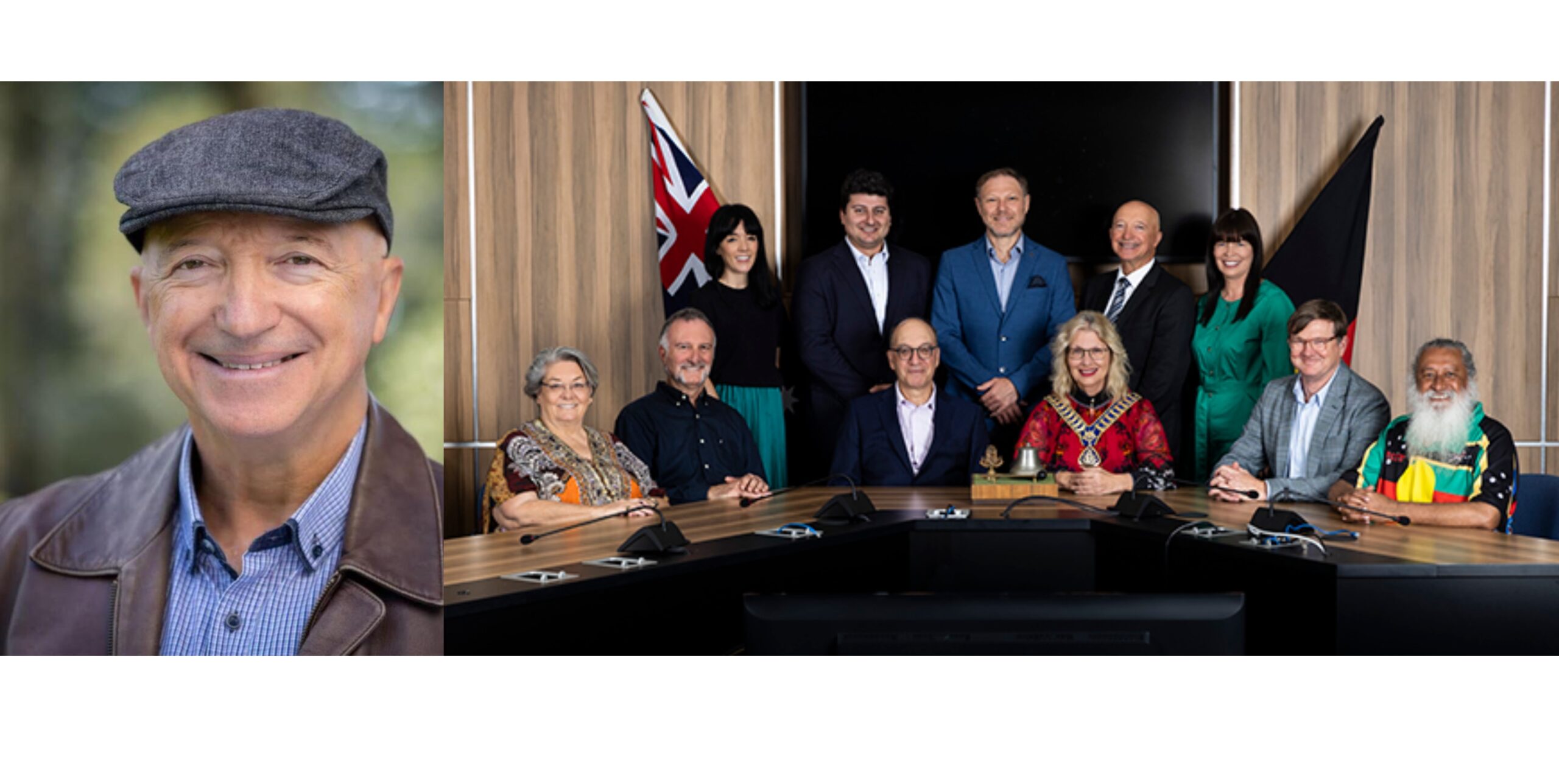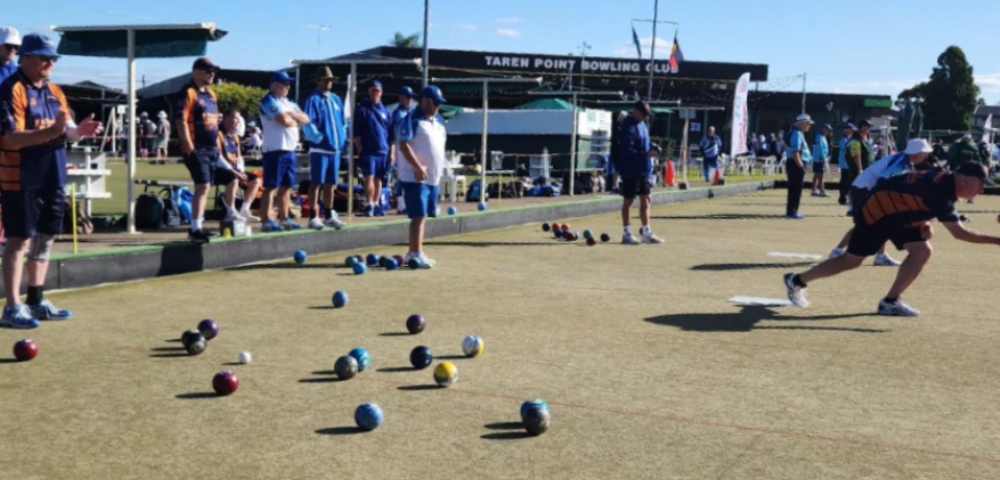
Seaside sculptures walking away
BY ALEC SMART
Sculpture by the Sea, the annual three-week artists’ trail that takes place between late October and early November every year on the seafront walkway between Bondi Beach and Tamarama, is threatening to leave the area after this year’s event.
It will end 22 years of incredible artworks set imaginatively into the landscape, most of them enormous and astonishingly inventive, which never fail to attract thousands of visitors.
The alleged issue at the heart of Sculpture by the Sea’s decision to seek alternative environs to showcase their work is a new concrete footpath in Marks Park, funded by Waverley Council.
Located approximately half-way along the coastal route above Mackenzies Point, Sculpture by the Sea insist the path, currently under construction along the northern perimeter of Marks Park, impacts negatively upon their exhibitions.
In a press release issued on 11 July, the founding director of Sculpture by the Sea, David Handley, said: “Waverley Council’s decision is devastating for Sculpture by the Sea and destroys Marks Park as a window to the world for the hundreds of thousands of people that come to see the artworks set against the iconic backdrop every spring.
“We have informed Council this is likely to be the last exhibition. It is too late to cancel for 2019, although nine sculptures will no longer be able to be exhibited and 12 will be greatly compromised..”
Services for disabled outweigh aesthetics
A Waverley Council spokesperson responded: “We do not accept the assertion that an accessible path close to eight sculptures could ruin an event that includes more than 100 sculptures along our 2km stretch of coastal walk from Bondi to Tamarama Beach.”
The spokesperson continued: “Could you image if we put the park in the middle of the park, where views to the ocean are limited? We’d be dragged over the coals for failing to provide a fulfilling coastal experience for people in wheelchairs. David would then blast us for interfering with prime spots in the centre of the park.”
The General Manager for Waverley Council, Ross McLeod, was also sceptical. “We do not accept the assertion that Sculpture by the Sea will have to relocate because of our accessible pathway,” he said in a statement. “Council’s view is that services for people with disabilities outweighs some inconvenience and potential aesthetic impact over a small portion of the Sculpture by the Sea event which will still be free to use the park.”
Sculpture by the Sea’s Handley countered: “Marks Park will no longer offer the pristine backdrop suitable for a major international exhibition … The path totally puts a kibosh on the exhibition and rips the guts out of it. We are in a state of disbelief. It’s unbelievable.”
BIS Oxford Economics, who describe themselves as “Australia’s leading provider of industry research, analysis and forecasting services,” claim visitors to the three-week annual event contributed millions of dollars to the local economy.
Sculpture by the Sea’s press release asserted: “A recent economic study by BIS Oxford Economics estimated visitors to the event contributed more than $11 million in direct spending to local Waverley food and beverage businesses, while interstate and international visitors travelling to Sydney specifically to visit the exhibition contribute $38.9M to the NSW economy.”
However, that figure was repudiated by Emmanuel Constantinou, President of the Bondi Chamber of Commerce. “Are those people [sculpture visitors] here to buy?,” he said. “And how do we quantify that figure [$11 million]?
“The [local] businesses have not come to me and said ‘oh no’ if it doesn’t go ahead. No one has ever said ‘it’s great and it really helps me’.”
City Hub visited the Marks Park construction site on the walkway between Bondi and Tamarama and observed the new concrete path at the centre of the storm, which is well on its way to completion. One can sympathise with why the sculpture people are angry at the new path’s intrusion into some of their exhibition space.
Nevertheless, considering the park is used all hours of the day, 12 months a year, and Sculpture by the Sea runs for three weeks a year through Oct-Nov, it seems haughty for the artists and their representatives to dictate to Waverley Council the route of their footpath.
Most importantly, the new path provides access to wheelchair-bound and less able people to enjoy seafront views, where previously they were inhibited by grass and stone steps.
The less able can now view the sculptures too. The proposed alternate path that Sculpture by the Sea published on their webpage, under the heading Access and Inclusion Program, would have guided the disabled around the outer fringes, between foliage. It appears there they would have been little better off than the last 22 years of the sculptures – in other words, still restricted from Marks Park.
Are the event organisers insisting the short-term needs of able-bodied sculptors trump the all-year-round needs of the less-able to utilise the park and foreshore?
City Hub contacted Physical Disability Australia (PDA), a national representative organisation run by people with physical disability for people with physical disability. According to their manifest, PDA works with governments, industry and the community to promote the rights, responsibilities, issues and participation of people with physical disability and encourages them to realise their full potential.
Simon Burchill, PDA Manager, told City Hub: “With specific regard to the threat made by organisers to the Sculptures by the Sea exhibition to relocate from Bondi’s Marks Park because Council is building an accessible pathway along the park’s rear periphery, we would ask which is more important: Access for all to one of Australia’s most iconic outdoor locations or the aesthetic sensitivities of a small number of sculpture exhibition purists?
“We would also ask: How many of the estimated “hundreds of thousands of people who come to see the artworks” would actually feel that the path will ‘rip the guts out of the show’?”
Burchill continued: “Most Australians support the notion that people with disability should have full access to the community and this includes the recreational opportunities local government councils provide. These days we expect public facilities to be accessible and for infrastructure to include reserved parking spaces and wheelchair accessible toilets to sit alongside the general access facilities provided for the public.
“The organisers of the Sculptures by the Sea exhibition should have the same expectation. Moreover, they should be thinking about how they can maximise the accessibility of the exhibition so that it can be enjoyed by all who might wish to attend.”
Brent Pitts, Acting CEO of Achieve Australia, the provider of disability services, told City Hub “It’s fantastic to see that public spaces in our community are set to become more and more inclusive for people with disability. This not only encourages social inclusion and awareness, but also ensures that people with disability have the same opportunities to experience leisure activities, access to outdoor spaces and special events.
“Sculptures by the Sea is an incredible landmark event for Sydney and we hope that organisers and artists are able to use the innovation and creativity that the show is famous for to discover new and interesting ways to ensure accessibility for everyone in our community,” he said.
Sculpture by the Sea’s webpage states: “Had the currently being built access path not taken us by complete surprise in mid-May this year we would have sought to work closely with Waverley Council to encourage them to create an access path that provides meaningful access to a large section of the existing Bondi coastal walk right around the south Bondi headland to the north Tamarama headland.”
Yet Waverley Council insist Sculpture by the Sea were kept informed of developments concerning the proposed footpath, and indeed the public consultations where stakeholders and residents were welcomed to provide feedback took place from 24 February to 24 March 2017, and again from 10 March 2018 to 8 April 2018.
Sculpture by the Sea also asserted in their July 11 press release that “In 2009, we presented a plan to Council for Justin’s idea of a step free coastal path from Bondi to MarksPark (and eventually, all the way to Bronte)…”
This referred to a suggested alternate path route from Bondi to Marks Park proposed in 2009 by wheelchair-bound mobility campaigner Justin Reid, later filmed in the 2013 short documentary Bondi Rollercoaster: Focus on Ability by Adam Long.
Waverley mayor John Wakefield revealed Waverley Council has modified plans for the path in response to feedback from Sculpture by the Sea’s organisers since the footpath upgrades were proposed in 2015.
“All Sculpture by the Sea has to do is move the sculptures two metres to the left, or two metres to the right. It’s a 1.8-metre wide path.”
So, an obvious question arises: why did Sculpture by the Sea claim they were ‘taken by complete surprise’ and wait until July 2019 to raise the footpath as an issue when it appears they were well aware of the footpath’s development years in advance?
Lucrative offers elsewhere
Perhaps the issue here is more about pursuing potentially lucrative financial offers by moving the event further afield.
Waverley Council provided $145,000 to Sculpture by the Sea in 2018. With that amount of money available, it must be tempting to solicit more lavish offers elsewhere, such as Sydney’s Northern Beaches, which, coincidentally, along with Sutherland Shire and Inner West Councils have now pitched to host the event.
Handley himself announced: “In order to continue providing the cultural, social, education, access, tourism and economic benefits that Sculpture by the Sea offers each year, we are calling for expressions of interest from coastal councils in Sydney and around Australia to be considered as a new home for the exhibition.”
Hours after Sculpture by the Sea’s announcement that they were abandoning Bondi, politicians from the Northern Beaches, including Federal MP Zali Steggall, State MP James Griffin and Northern Beaches Mayor Michael Regan, proffered their interest.
“We’re putting in a 36km track from Manly to Palm Beach,” Mayor Regan declared, “that will be built in 2020. Sculpture by the Sea would be a great addition to that. … But there would be no better home for Sculpture by the Sea than in Manly and up the northern beaches.”
As to whether the public would prefer a 36km artists trail over the existing 1.5km Bondi to Tamarama walk is a moot point.
Sutherland Shire Council deputy mayor Steve Simpson and Inner West Council mayor Darcy Byrne also weighed in. Simpson said his council would be interested but, in fairness, “wouldn’t actively go out and seek it and undercut an established area”.
The mayor of the Inner West Council, Darcy Byrne, was more forthcoming, declaring, “The Harbour Bridge is the backdrop to the Balmain peninsula and the Bay Run is one of the most popular pedestrian paths in Sydney. ‘Sculpture by the Bay’ has a real ring to it.”
Byrne exclaimed the IWC was “very open” to the sculptures heading west as it “might even make the event edgier and more avant-garde.”
The following day, Destination Wollongong declared it too was putting together a bid to host Sculpture by the Sea. General manager Mark Sleigh proclaimed Wollongong would be a great alternative to Bondi, as the festival could fit into Wollongong’s coastal walk, the Blue Mile.
Then Central Coast Council Mayor Jane Smith pitched in, saying, “The Central Coast is the perfect destination for such world-class events, such as Sculptures by the Sea.” Gosford East Councillor Jeff Sundstrom requested the council investigate suitable locations along the Central Coast.
This was followed by several seaside Victorian towns, including St Kilda, Geelong, Mornington Peninsula and Lorne, where the respective mayors expressed interest in being hosts to the sculptures.
Bayside Council in Sydney’s south, which, since 2011, has hosted its own Sculptures at Bayside exhibition in Cook Park on Kyeemagh foreshore every April, called an extraordinary meeting to discuss taking on Sculpture by the Sea too.
However, Sculpture by the Sea founder-organiser David Handley hinted he’d made up his mind when he told the Manly Daily he particularly appreciated the Manly politicians’ “opportunistic bid”, saying Manly “could put on a wonderful exhibition” and that he would “like to work with a council that is welcoming and that respected what the artists provide to the community”.
One could be forgiven for suspecting the issue at the heart of this dispute is really about Sculpture by the Sea pursuing better financial offers to relocate elsewhere, but hanging it on a minor dispute about a footpath to make Waverley Council appear the guilty party for driving them away.
Nevertheless, Waverley mayor John Wakefield said his council had a “firm, long-standing commitment” to Sculpture by the Sea and would continue to provide them $150,000 funding per year, should they opt to remain.
Sculpture by the Sea were contacted by City Hub to respond, but declined.









